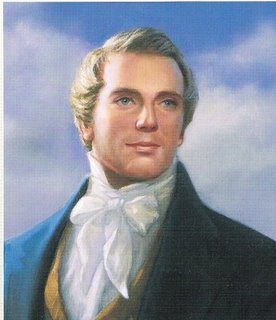What are the odds that a young, informally educated man would have the skills to translate Egyptian papyrus in the early 1800’s? This has been the question among religious and biblical scholars as they have criticized Mormonism (The Church of Jesus Christ of Latter-day Saints, LDS Church) and made jabs at the authenticity of the Book of Abraham in the Pearl of Great Price. However, as ancient documents are discovered, there is “intriguing support” of Joseph Smith’s translations of the papyrus, according to Daniel Peterson, a professor of Islamic studies and Arabic at Brigham Young University. He is the founder of MormonScholarsTestify.org and blogs daily at Patheos.com.
 In a recent article for the Deseret News, Peterson explained some of the new findings that lend credence to the scripture. He cited an example of the plain of Olishem, which is mentioned in Abraham 1:10, and that is not mentioned in the Bible, but has been found on an inscription, dating about 2250 BC, which indicates the correct place in northwestern Syria.
In a recent article for the Deseret News, Peterson explained some of the new findings that lend credence to the scripture. He cited an example of the plain of Olishem, which is mentioned in Abraham 1:10, and that is not mentioned in the Bible, but has been found on an inscription, dating about 2250 BC, which indicates the correct place in northwestern Syria.
Additionally, the names of three of the four idols that are named in Facsimile 1 of the Book of Abraham have been verified, and the crocodile identified as “the idolatrous god of Pharaoh” in fig. 9 seems to be the Crocodile God Sobk, a King that is described in the Pyramid Texts of Pharaoh Unas (ca. 2350 BC).
The attempt to sacrifice Abraham as seen on Facsimile 1 (PGP Abraham 1:7), has been evidenced in post biblical literature, which frequently describes Abraham’s miraculous escape from being murdered. Also, a third-century AD Egyptian papyrus connects Abraham to a lion-couch scene similar to the one in Facsimile 1.
The Bible does not describe Abraham as an astronomer, but many post biblical texts and scholars describe him as one who taught Astronomy to Egypt’s priests and Pharaoh, including Josephus, who described him as understanding the “celestial science.” Peterson explained additional findings:
The 10th-century Muslim scholar al-Tabari says that “the seven heavens were opened to Abraham, up to and including the throne (of God).” Facsimile 3 shows an Egyptian scene bearing the explanation, “Abraham is reasoning upon the principles of Astronomy, in the king’s court.” Similarly, Josephus tells of Abraham’s teaching astronomy in Egypt, and the fourth-century Christian historian Eusebius preserves an even earlier account specifying that Abraham taught astronomy to both Egypt’s priests and Pharaoh himself.
Abraham 4-5 records the patriarch’s vision of creation, unknown in the Bible but known to al-Tabari. And, though the Bible says nothing of a heavenly council that planned the creation of man, several ancient documents first published in the 20th century describe it.
Finally, Abraham’s account describes creation as the “organization” of pre-existing materials, which contradicts traditional doctrines that God made the universe from nothing. But creation from nothing doesn’t appear in the Bible. Ancient Jewish writings teach that God created the universe by forming preexistent matter. Christian thinkers, influenced by Greek philosophy, began to teach creation from nothing only in the second century.
Peterson concludes the article with this tongue-in-cheek comment: “It’s amazing what Joseph Smith was able to pick up on the western frontier.”
In 1977, Michael D. Rhodes, a Mormon scholar, published a translation and commentary of Facsimile 2 from the Book of Abraham. But in 1997, because of advances in Egyptological understanding, he felt that his study needed revision. He concluded the later writing with the following words:
“Joseph Smith simply could not have acquired the understanding he had of these things from the world. Nevertheless, as this study has shown, many of the prophet’s explanations of the hypocephalus illustrated in Facsimile 2 are supported by our present understanding of ancient Egyptian religion, and are in fact especially typical of Late Egyptian religious writings. One or two could conceivably be dismissed as mere chance or lucky guessing, but the many correct interpretations taken together are impossible to ignore. It is clear that Joseph Smith know what he was talking about. This only reaffirms what every honest person can learn in earnest prayer, that Joseph Smith received these things from God, even as he claimed.”
by Jan
Additional Resources:
Joseph Smith: Prohet of the Restoration
The Book of Mormon (Another Testament of Jesus Christ)
